Numerous little passerine birds, especially in the Northern Hemisphere and Africa, make up the Paridae family. These little birds are also known as types of tit birds. Many of these birds were formerly classified as Parus. Members of this family are commonly referred to as “tits” in the English-speaking world, but in North America, they are known as “chickadees” or “titmice.” The word “titmouse” dates back to the 14th century, when it was derived from the Old English mase (Proto-Germanic *maison; Modern Dutch mees; German Meise).
Small, hardy, and common in the forest, the majority of the species in this category have short, hefty beaks. Some of them even have fancy crests! Their sizes range from 3.9 to 8.7 inches, with the largest being 10 inches. In addition to seeds, these birds also eat insects, demonstrating their adaptability. Many different kinds of tit birds congregate around human settlements, where they may easily get their fill of peanuts, sunflower seeds, and other delights from bird feeders set up by bird lovers. In this article, we are going to discover the many types of tit birds and their unique traits. Let’s go!
Great Tit

Great tit
©Monika Surzin/Shutterstock.com
A member of the tit family Paridae, the great tit (Parus major) is a species of passerine bird. It is just one of the types of tit birds. Great tits are a common sight in wooded areas throughout much of the world, including Europe, the Middle East, Central Asia, the east across the Palearctic to the Amur River, and the south to sections of North Africa. This species was once considered to be a composite of many different subspecies. Because of genetic differences, the great tit was split into two species: the southern Asian Cinereous Tit (Parus cinereus) and the East Asian Japanese Tit (Parus minor). In the genus Parus, the great tit is still the most common.
Among its many subspecies, the great tit is easily recognizable by its black head and neck, white cheeks, olive upper parts, and yellow under parts. It is an insectivore during the warmer months, but during the colder months, it will eat a variety of things, including small hibernating bats. Like other tits, it prefers to build its nest inside an existing tree cavity. About 12 eggs are laid by the female, and she incubates them all by herself. Woodpeckers, squirrels, and weasels may rob the nests, spreading fleas and other parasites; sparrowhawks may prey on the adults. The great tit is now a regular sight in urban parks and gardens thanks to its successful adaptation to the altered ecosystems created by humans.
Eurasian Blue Tit
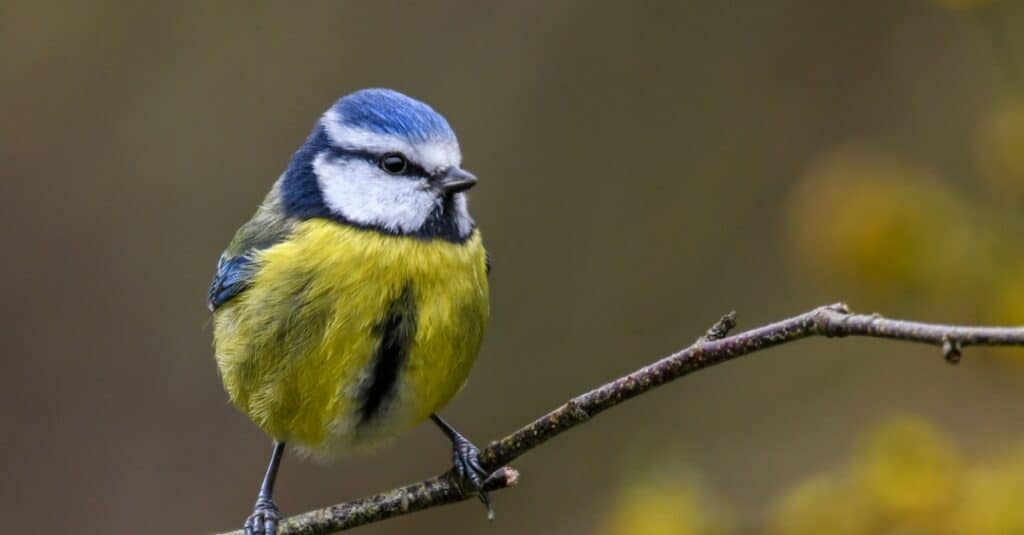
Eurasian blue tit
©bearacreative/Shutterstock.com
The Eurasian blue tit is one of the many types of tit birds. There is a little passerine bird native to Eurasia called the Eurasian blue tit (Cyanistes caeruleus). Its small size and distinctive blue and yellow plumage make it instantly recognizable.
Eurasian blue tits are common breeders in deciduous or mixed forests that feature a high percentage of oak across much of temperate and subarctic Europe and the western Palearctic. They prefer to nest in tree holes but will use nest boxes if required. The larger and more common great tit is their major competitor for nests and foraging grounds.
The Eurasian blue tit’s food is primarily made up of insects and spiders. When mating season is over, they switch to a diet of seeds and other vegetables. The birds have gained notoriety for their acrobatic abilities due to their ability to perch upside down on the highest branches of trees and bushes in search of food.
Coal Tit
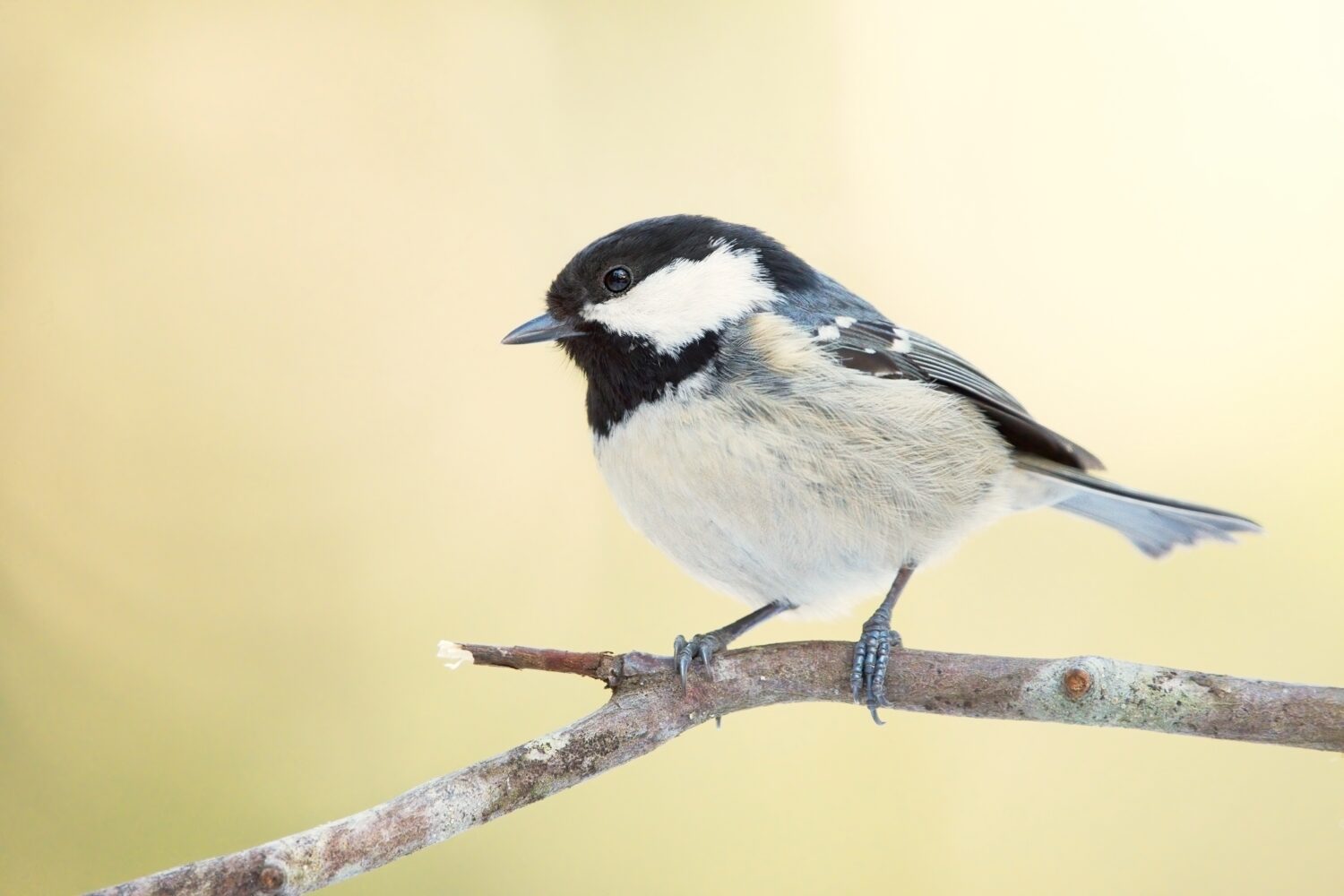
Coal tit
©Henri_Lehtola/Shutterstock.com
The little passerine bird known as the coal tit (Periparus ater) or cole tit (Colias colemani) belongs to the tit family, Paridae. It breeds regularly and is found all over the Palearctic, from the subtropics to the temperate zones, including North Africa. The black-crested tit is currently commonly considered to be a subspecies of this species. It is one of the many types of tit birds.
Marsh Tit

Marsh tit
©AlexandruPh/Shutterstock.com
Similar to the willow tit, the marsh tit (Poecile palustris) is a passerine bird belonging to the tit family Paridae and the genus Poecile. It has a length of only 4.7 inches and a weight of only 0.42 ounces. This little bird has a black cap and neck, white cheeks, a brown back, and a greyish-brown tail and wings. The number of recognized subspecies ranges from 8 to 11. The willow tit and this bird are so similar that they weren’t officially recognized as separate species until 1897, which might lead to confusion while trying to identify either.
Its name belies the fact that it occurs in a variety of environments, including dry forests, as it does across its range in temperate Europe and northern Asia. The marsh tit eats everything from seeds to spiders to caterpillars. It builds its nests in tree hollows, expanding preexisting cavities rather than creating new ones.
Willow Tit
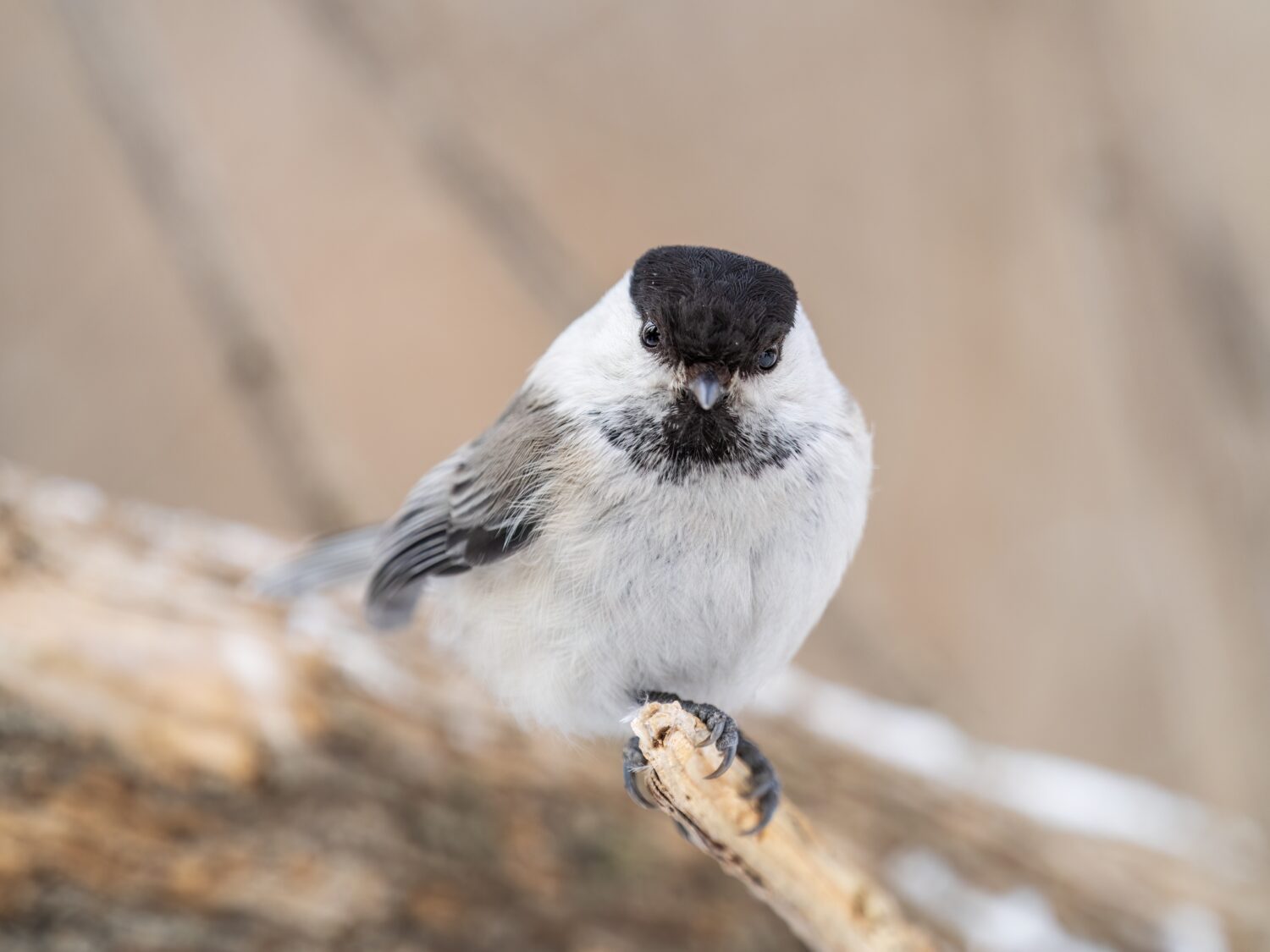
Willow tit
©Dark_Side/Shutterstock.com
The willow tit (Poecile montanus) belongs to the family Paridae of passerine birds. The Palearctic and much of temperate and subarctic Europe are home to numerous breeding populations of this species. The head and bib are black, and the feathers are a drab grey-brown and off-white. It breeds significantly further north than the nearly related marsh tit because it is more of a conifer specialist. Most types of tit birds do not migrate, hence it is a resident species.
Crested Tit
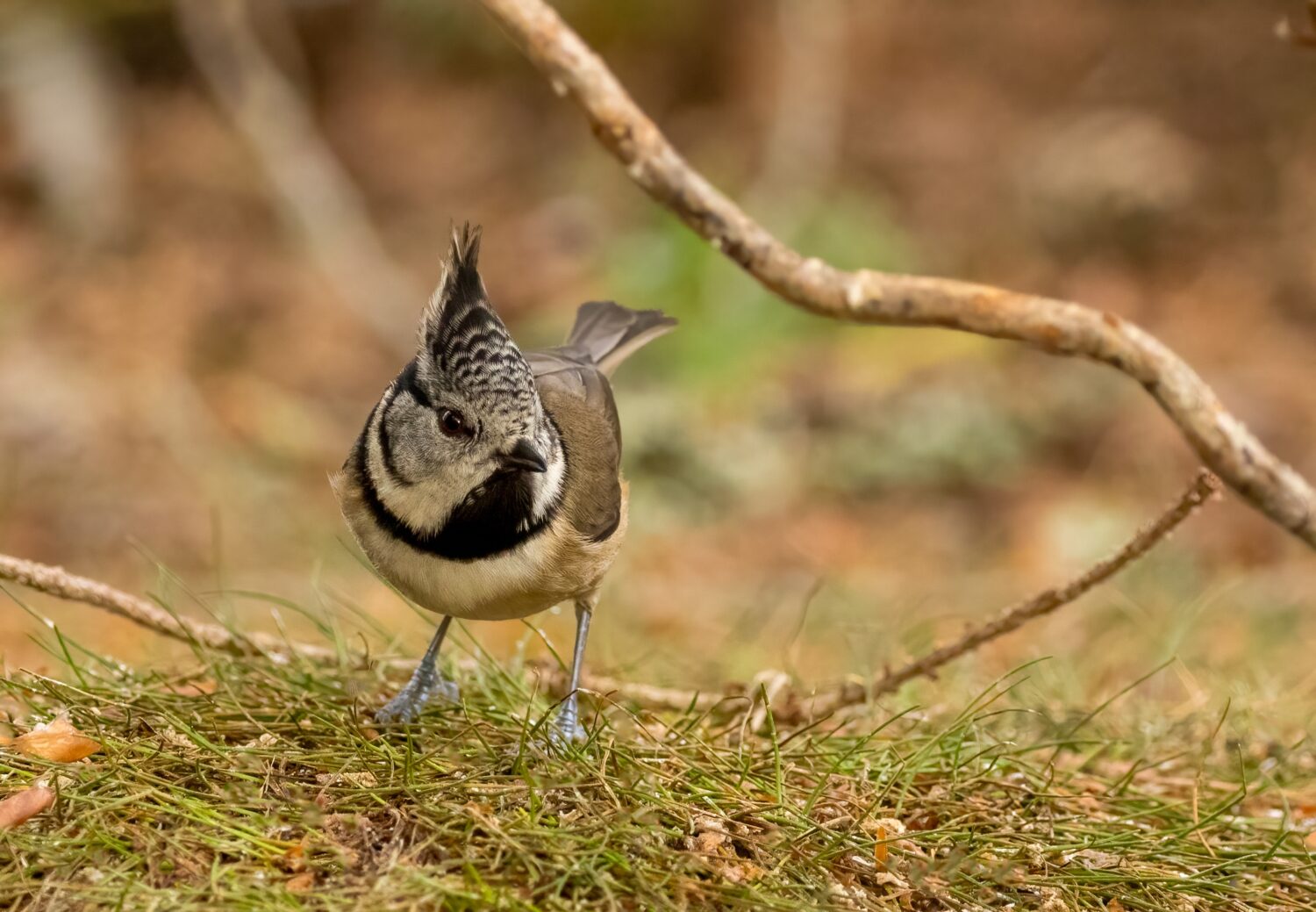
Crested tit
©SarahLou Photography/Shutterstock.com
A member of the tit family Paridae, the crested tit (Lophophanes cristatus) is also known as the European crested tit. It breeds regularly in deciduous forests in France and the Iberian Peninsula, and regularly in coniferous forests in central and northern Europe. It rarely ventures outside of its preferred habitat, the ancient pine forests of Inverness and Strathspey in Scotland, in Great Britain. There have been reports of stray crested tits in England. Its members stay put, making it a resident population.
Tufted Titmouse

Tufted titmouse
©Jeanne Crockett/Shutterstock.com
One of the smallest members of the tit and chickadee family, the tufted titmouse (Baeolophus bicolor) is a native North American songbird (Paridae). These little birds’ white underbelly and grey upper bodies are separated by a rusty orange border. Its tufted grey crest and black foreheads are further distinguishing features. The black forehead is much less noticeable in youngsters, making them easy to mistake for oak titmice (although their ranges do not overlap). Males are often larger than females. It is one of the most unique types of tit birds.
Black-Capped Chickadee
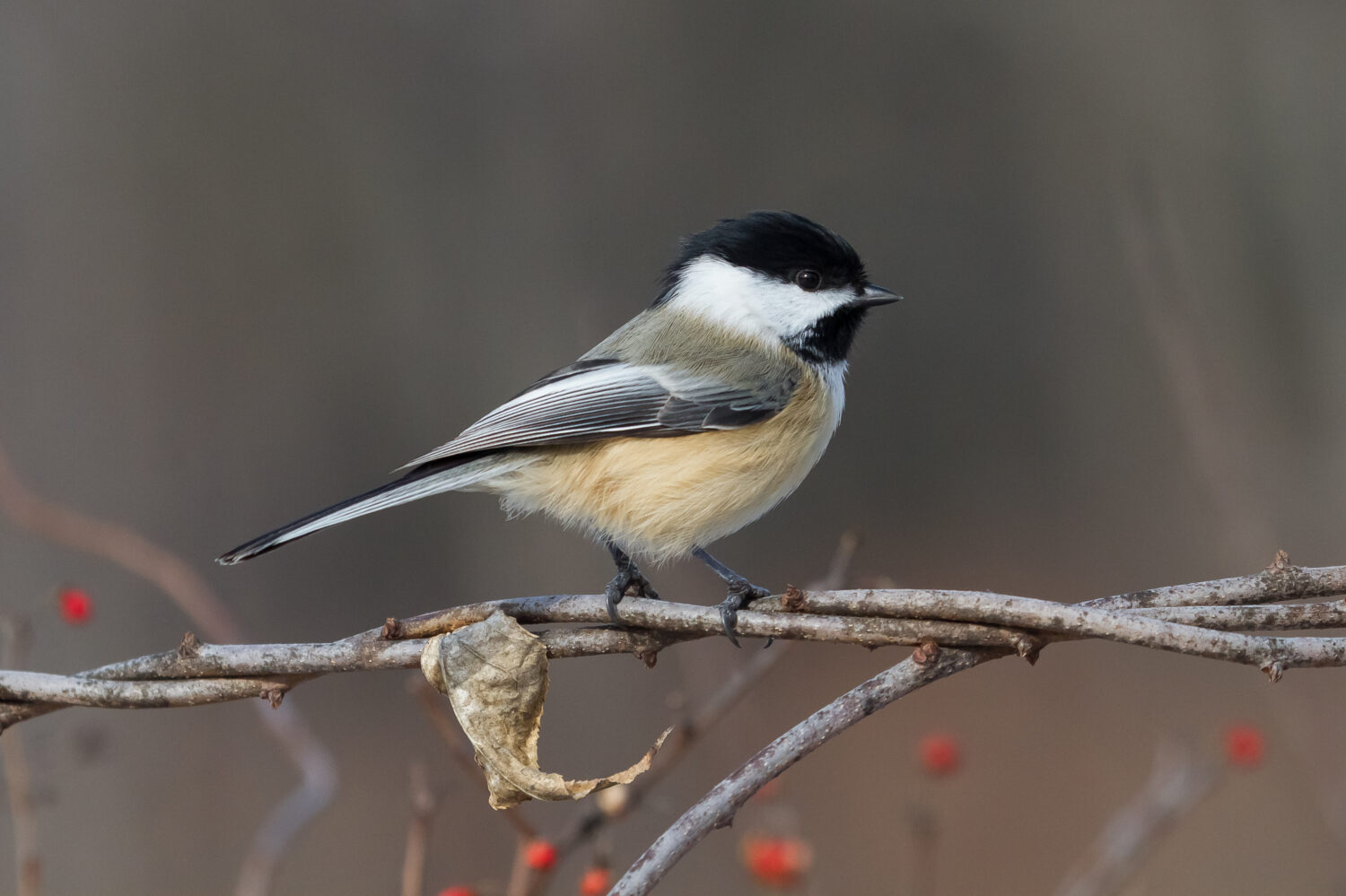
Black-capped chickadee
©Paul Roedding/Shutterstock.com
Poecile atricapillus is one of the types of tit birds. It is often known as the black-capped chickadee, is a small, non-migratory songbird found in deciduous and mixed woods across North America. This bird belongs to the family of passerine birds known as tits from the Paridae family. It is the official state bird of two US states, Massachusetts and Maine, and the official provincial bird of Canada’s New Brunswick province.
Its capacity to adapt to the cold of winter nights by lowering its core temperature, its excellent spatial memory, which it uses to move the caches at which it stores food, and its confidence around humans (sometimes feeding from the hand) have all contributed to its notoriety.
Carolina Chickadee

Carolina chickadee
©Ami Parikh/Shutterstock.com
The Carolina chickadee is a little passerine bird belonging to the Paridae tit family; its scientific name is Poecile carolinensis. The length of an adult is 11.5 to 13 centimeters (4.5 to 5.1 inches), their weight is 9 to 12 grams (0.3 to 0.42 ounces), and they have a black hat and bib with white sides to their face. The undersides of their bodies are white, while the sides and back are a rusty brown. They have a somewhat long tail, small wings, and a short black beak. The Carolina chickadee resembles the black-capped chickadee, but it may be identified by its somewhat shorter and squarer-tailed body, as well as its browner wings with browner (not whitish fringed) larger coverts and less apparent white fringing on the secondary feathers.
Sultan Tit

Sultan tit
©Sapon Kumar Baruah/Shutterstock.com
A bird called the sultan tit (Melanochlora sultanea) can be found in the Asian woodlands. Its head crest is bright yellow, its bill is black, and its upper and lower feathers are black and yellow. They think men and women are on equal footing. The female’s upper body is greenish-black, while her throat is yellow. The juvenile is visually less impressive than the adult, with a shorter crest and duller coloring. Sylviparus, with its single species, is the closest relative to the more common Parus titmouse, although it is still a very different bird.
The male has bright yellow feathers on his forehead, crown, sides of his breast, throat, chin, neck, and head; deep yellow feathers below the breast; barred or mottled white feathers on his thighs; and metallic sheen along the feather tips of his upper feathers. The bird stands on its hind legs and raises its crest to show attention or alarm. It is one of the many types of tit birds.
Oak Titmouse
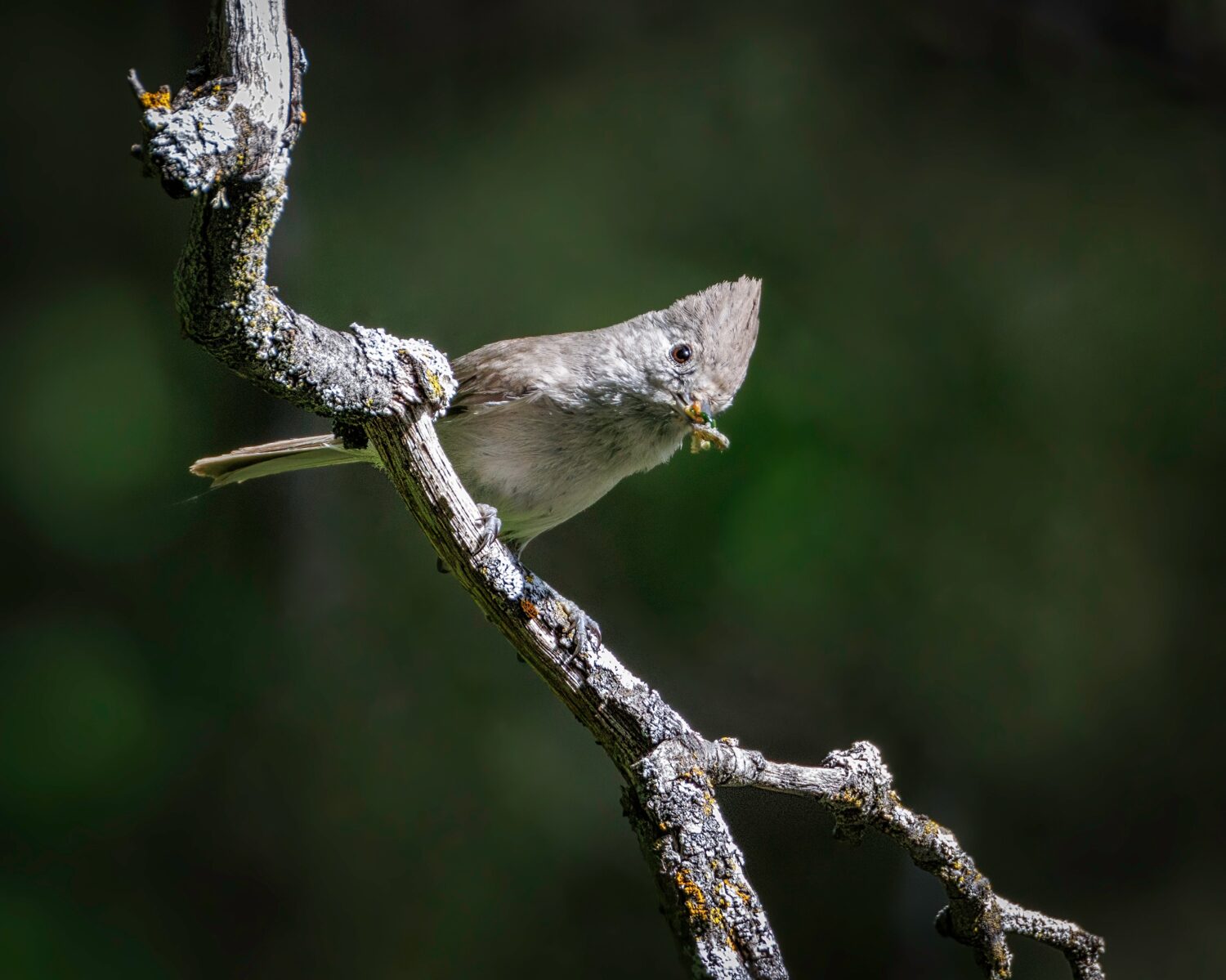
Oak titmouse
©J. S. Fisher/Shutterstock.com
Among the family of birds known as tits, the oak titmouse (Baeolophus inornatus) is a common member. In 1996, the American Ornithologists’ Union recognized the plain titmouse and the oak titmouse as two separate species with their own songs, habitat preferences, and genetic makeup.
The oak titmouse is a little, gray bird with a brownish tinge and a tiny tuft or crest on its head. The top is unadorned, and the bottom is a lighter shade of gray. The differences between the sexes are negligible or nonexistent.
The range of this species includes the northern San Joaquin Valley, although it is permanently resident on the Pacific slope from southern Oregon south through California west of the Sierra Nevada to Baja California. It is most common in open, low- to medium-elevation woodlands with plenty of oak and oak-pine trees, but it has been spotted in forests as well.
Yellow-Browed Tit
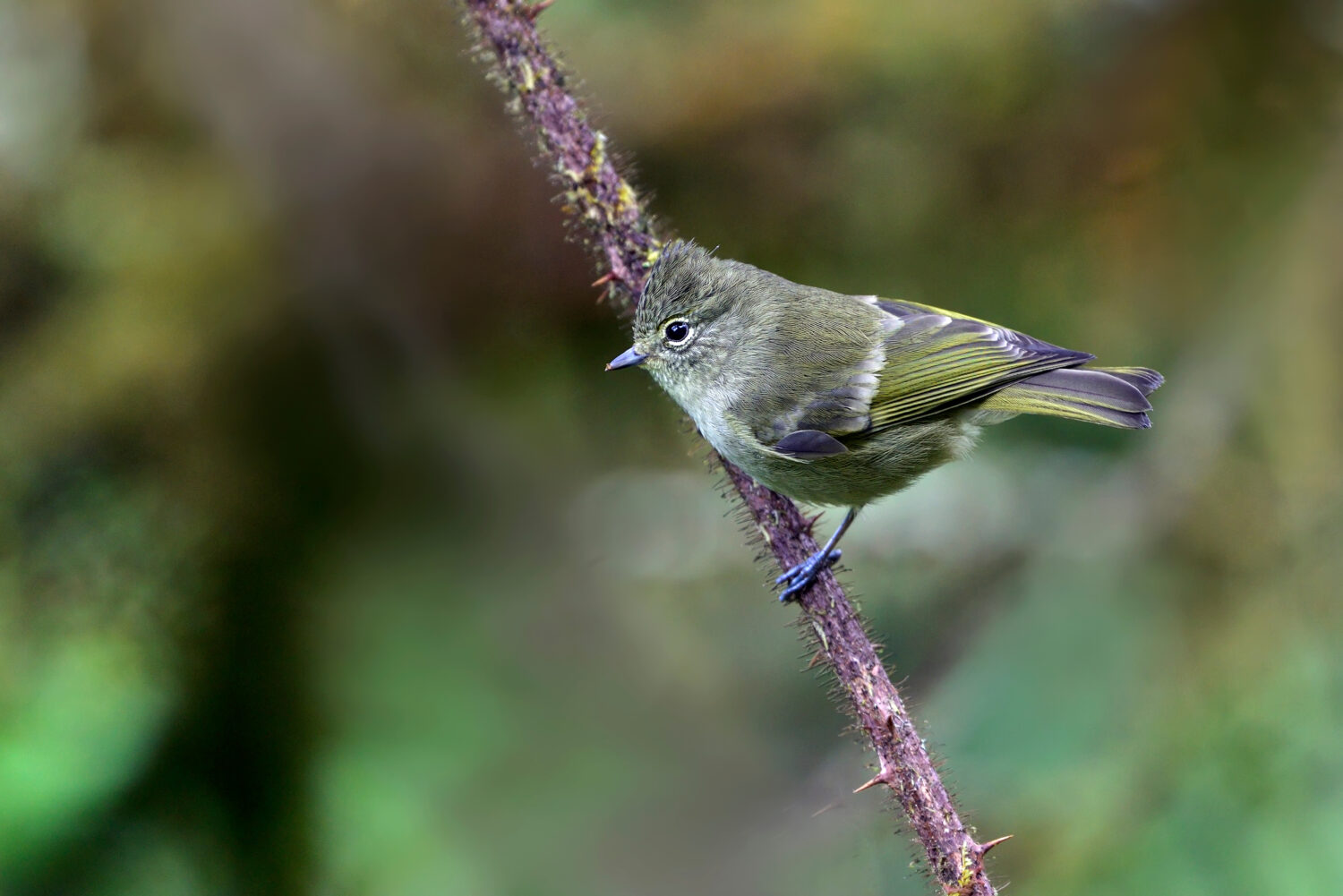
Yellow-browed tit
©BGS_Image/Shutterstock.com
The yellow-browed tit, or Sylviparus modestus, is a bird of to the paididae family. Sylviparus is the only member of its genus. The southern Himalayas, the northeastern Indian and Chinese plains, and southern China, with some instances in Southeast Asia. It prefers moist lowland forests and moist montane forests, both of which are found in the subtropics and tropics.
The Black-Crested Titmouse
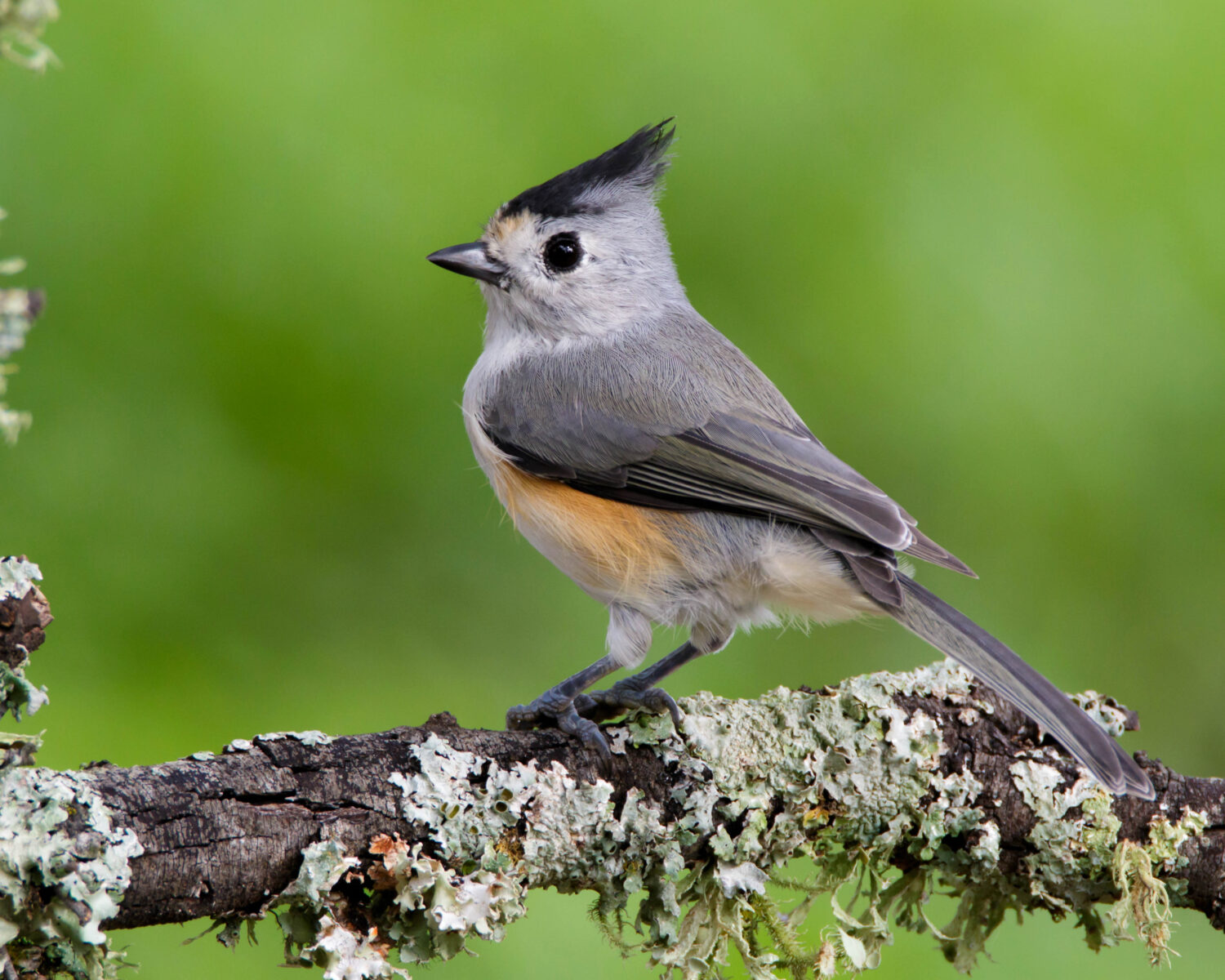
The Black-crested titmouse
©Wingman Photography/Shutterstock.com
A member of the family Paridae, the black-crested titmouse is sometimes known as the Mexico titmouse. Once thought to be a subspecies of the tufted titmouse, this bird was elevated to species status in 2002. Its native habitats are in what is now southern Texas, eastern Oklahoma, and central Mexico. St. Louis, Missouri, which is far to the north and east, has even seen them.
The bird’s rusty-colored flanks, gray upper parts, and light belly help it stand out among other birds. It reaches 14-15 centimeters in length. The male’s crest is long and jet black and stands proudly, while the female’s is shorter and paler. Spiders, insects, insect eggs, berries, and nuts make up the bulk of its diet.
The black-crested titmouse can be found nesting in a wide variety of structures, including tree cavities, fence posts, telephone poles, and man-made bird homes. In March or April, the female lays four to seven white eggs marked with reddish brown.
Ground Tit

Ground tit
©Kamal Hari Menon/Shutterstock.com
The ground tit, or Pseudopodoces humilis, is a species of bird that lives on the Tibetan plateau, to the north of the Himalayas. It is also known by the names Tibetan ground tit and Hume’s ground tit. Due to its peculiar appearance, ornithologists initially mistook this bird for a crow or jay. However, DNA sequence analysis has now shown that it is a member of the tit family (Paridae) and the only member of the genus Pseudopodoces. Tibetan Plateau, which spans China, Nepal, India, and Bhutan.
Juniper Titmouse

Juniper titmouse
©Wesley Gilson/Shutterstock.com
Among the passerine birds, the juniper titmouse (Baeolophus ridgwayi) stands out. In 1996, the American Ornithologists’ Union recognized the two subspecies of the plain titmouse—the oak titmouse and the juniper titmouse—based on their unique songs, habitat preferences, and genetics.
The juniper titmouse is a little, gray bird with a delicate crest on its head. Both sexes look similar to the naked eye. The Great Basin is the primary year-round home of this titmouse, but it can also be found as far afield as west Texas and extreme northeastern Sonora, Mexico, as well as southeastern Oregon and central Colorado to the south (the Madrean sky islands). It is mostly at home in riparian woodlands in the desert or warm, dry pinyon-juniper forests.
Juniper titmice will roost in tree holes, thick vegetation, or man-made bird nesting boxes. The titmouse, while roosting in foliage, will select a twig hidden by other plants or a pile of dead pine needles to create the illusion of a hollow. It typically travels in pairs or small groups rather than in vast flocks. After the mating season, it may forage with flocks of other species.
Azure Tit

Azure Tit
©Vitpolyak/Shutterstock.com
The azure tit (Cyanistes cyanus) is a Paridae bird. It breeds throughout Russia, Central Asia, northwest China, Manchuria, and Pakistan. This 12-13-centimeter bird is easily recognizable. The head, tail, wing bars, and underside are white. The top body is blue and has a dark eye line.
It inhabits temperate and subarctic deciduous or mixed forests, scrub, and wetlands. It lives year-round like most other birds. This bird typically lays 10 eggs in tree cavities. It hisses and bites when disturbed. It eats mostly insects, seeds, microscopic invertebrates, insect larvae, and insect eggs.
The photo featured at the top of this post is © Rudmer Zwerver/Shutterstock.com
Thank you for reading! Have some feedback for us? Contact the AZ Animals editorial team.






